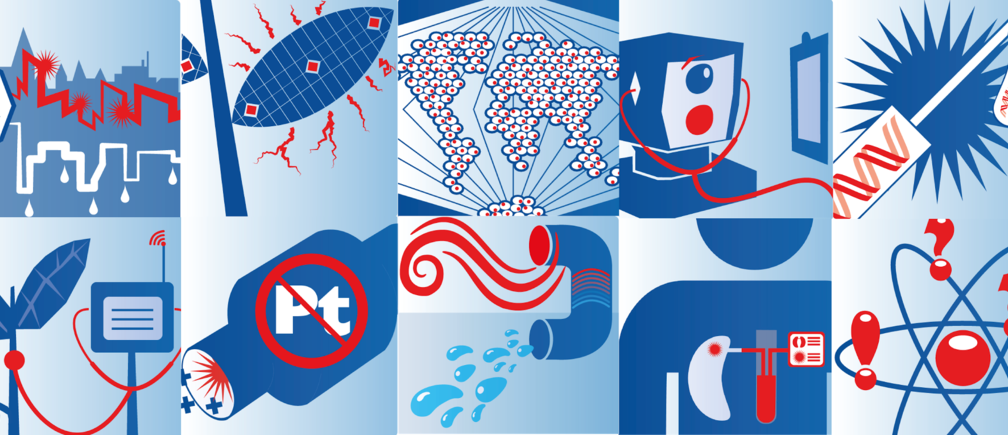When we saw the World Economic Forums’ list of Top Ten Emerging Technologies of 2017 ranked “a liquid fuel from sunlight” at number 4, we were elated. The diverse list compiled by the WEF and Scientific American advisory board, included solar fuels technology amongst many other amazing and exciting technologies that have potential to significantly impact society. Appropriately, the main criteria require that a technology have the potential to:
“…improve lives, transform industries and safeguard the planet.”
Touting the ability of a solar fuel to be made from CO2 the WEF said “… a closed system - wherein CO2 emitted by combustion is then transformed back into fuel instead of [released to] the atmosphere…could prove to be revolutionary for the solar and wind industries.”
Being able to synthesize a carbon neutral liquid fuel, to store excess energy from renewable resources, for use at a later time or to fulfill a different demand, would go a long way in solving the issue of dispatchablity that has plagued renewables like solar and wind. The daytime/nighttime issue of solar has long been lamented by utilities and consumers alike, and while a solar fuel could readily compensate for the typical diurnal cycle, the benefit of a solar fuel goes beyond keeping the lights on at night.
Leveraging renewables like solar and wind to produce a clean cheap fuel has the potential to lift nearly 18% of the world’s population out of extreme poverty. By providing a mechanism to store excess clean energy in the for of chemical bonds, communities currently without electricity would be able to meet their basic needs by supplying their own fuel for use in transportation, cooking, farming, and electricity generation. Both the Bill & Melinda Gates Foundation and the United Nations recognize the role of cheap clean energy in lifting communities out of poverty. Developing nations do not need to industrialize in the same carbon intense way as countries like the US.
Speaking of developed countries, solar fuels technology has a significant role to play in maintaining a balanced grid with continually increasing percentages of clean technologies, like wind and solar. Development and deployment of grid scale solar fuels production would enable regions with significant excesses of renewable electricity to generate a fuel for use at a later time, rather than simply curtailing production. Building power stations that generate their own fuel is not technology of the future – it is in operation today!
Back in 2015, we discussed a demonstration plant run by Sunfire that exemplified this model of operation. This year, Sunfire announced it partnership with Nordic Blue Crude to build a commercial scale “Blue Crude” plant in Norway. By 2020, Nordic Blue Crude expects to generate 8000 tons of carbon neutral Blue Crude, from CO2, water, and excess renewable energy.
The benefits of development and deployment of solar fuels technologies would indeed revolutionize the role solar and wind play in the global energy market. From lifting countries out of poverty, to stabilizing grid supply during peak generation times, a liquid fuel from the sun would change our world for the better.


